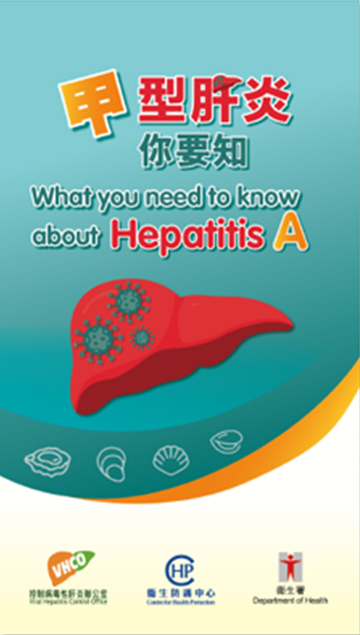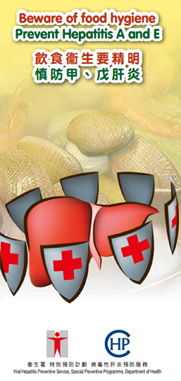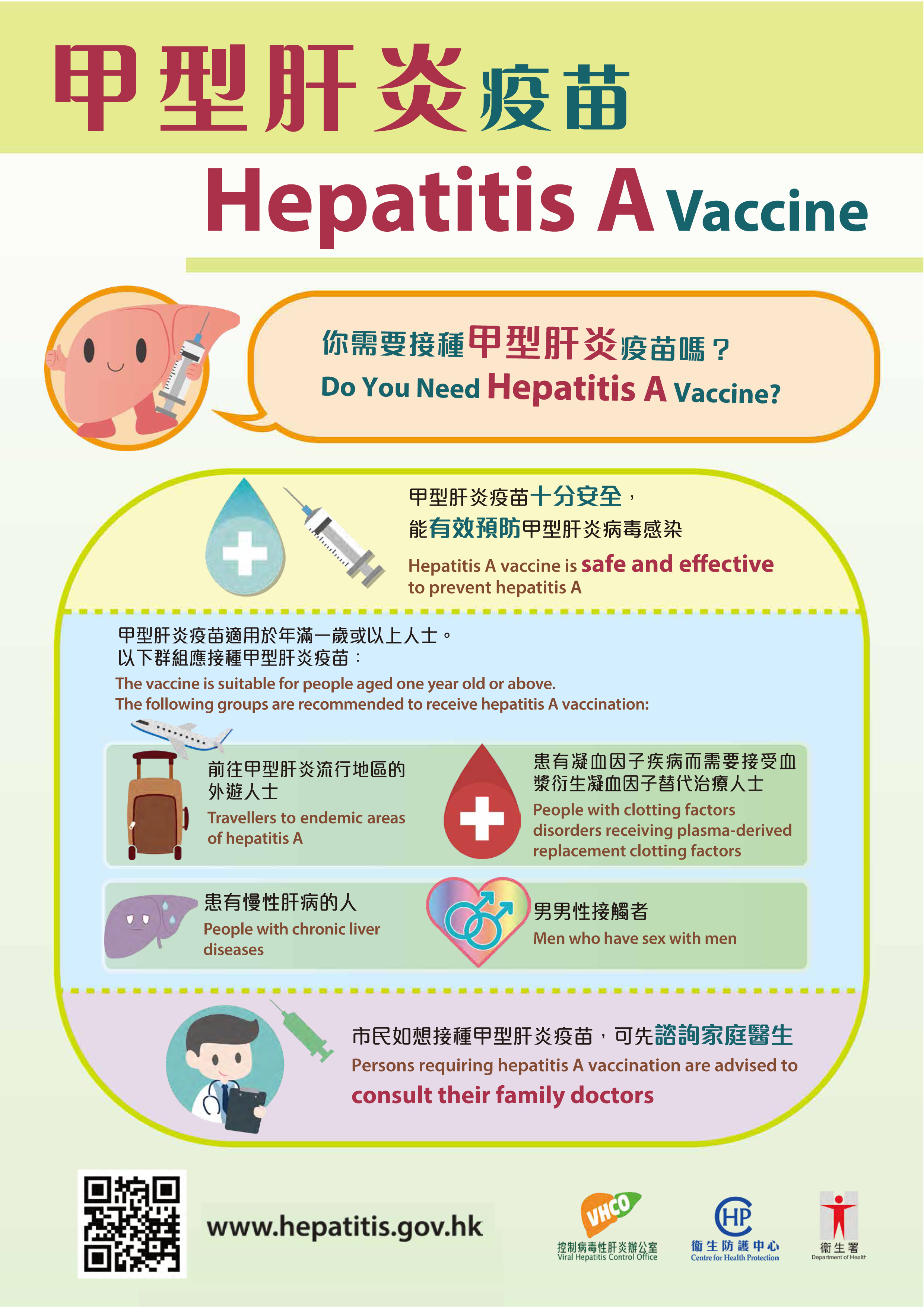Hepatitis A
- Hepatitis A is an acute liver disease caused by hepatitis A virus (HAV) infection.
- The incubation period is usually 14 - 28 days.
- People with hepatitis A may be asymptomatic, while some may have clinical features similar to other types of hepatitis, such as fever, fatigue, loss of appetite, nausea, vomiting, upper abdominal discomfort, tea-coloured urine and jaundice (yellowing discolouration of the skin and sclera of the eyes).
- Adults have signs and symptoms of illness more often than children, and the severity of disease increases in older age groups. Recovery from symptoms may take several weeks or months.
- Most patients have a complete recovery. In rare cases, hepatitis A may lead to liver failure and even death.
- People recovered from hepatitis A usually develop lifelong immunity against the infection. Hepatitis A does not cause chronic liver disease.
Epidemiology in Hong Kong
- The activity of hepatitis A is generally low in Hong Kong in recent years. The annual number of reported cases of hepatitis A fell from over 1 000 in 1988 to less than a hundred on average in the past decade.
- There was an outbreak of hepatitis A in 1992, resulting in 3 626 reported cases and 4 deaths.
- In 2016, an upsurge of HAV infection among men who have sex with men was noted.
- Hepatitis A is a notifiable infectious disease. Please click here for the statistics from the Centre for Health Protection.
- Population Health Survey (PHS) 2020-22 found that the overall prevalence of anti-HAV positive cases (which usually signifies past infection or active immunization) was 58.7% among persons aged 15 – 84. Please click here for the Thematic Report on Viral Hepatitis (PHS 2020-22).
Transmission of Hepatitis A
- HAV is transmitted primarily by the faecal-oral route; that is through ingestion and contact of food, water or objects that has been contaminated with the virus.
- HAV can persist in faeces and soil for a prolonged period of time. It is resistant to acidic environment (low pH) and heat (60 ºC for 60 minutes) as well as to freezing temperatures.
- HAV can also be transmitted through close personal contact or sexual contact (not limited to anal-oral contact) with an infectious person.
Diagnosis of Hepatitis A
- Cases of hepatitis A are clinically indistinguishable from other types of acute viral hepatitis.
- Diagnosis is made by the detection of HAV-specific immunoglobulin M (IgM) antibodies in the blood or HAV ribonucleic acid (RNA) by test using reverse transcriptase polymerase chain reaction (RT-PCR).
Treatment of Hepatitis A
- There is no specific treatment for hepatitis A.
- Therapy is aimed at maintaining comfort and adequate nutritional balance, including replacement of fluids that are lost from vomiting and diarrhoea.
Prevention of Hepatitis A
- Maintain good personal hygiene. Perform hand hygiene before handling food or eating. Flush the toilet after use and wash hands with soap.
- Maintain good food hygiene. Drink boiled water. Eat thoroughly cleaned and cooked food, especially bivalves such as oysters, clams, mussels and scallops (For information on food safety, please click here and visit the website of Centre for Food Safety)
- Maintain good environmental hygiene. Treat contaminated water and sewage properly. Handle and store drinking water properly. Keep kitchens and utensils clean.
- Hepatitis A vaccination is effective to prevent HAV infection, please click here for information on hepatitis A vaccine.
Health education materials



